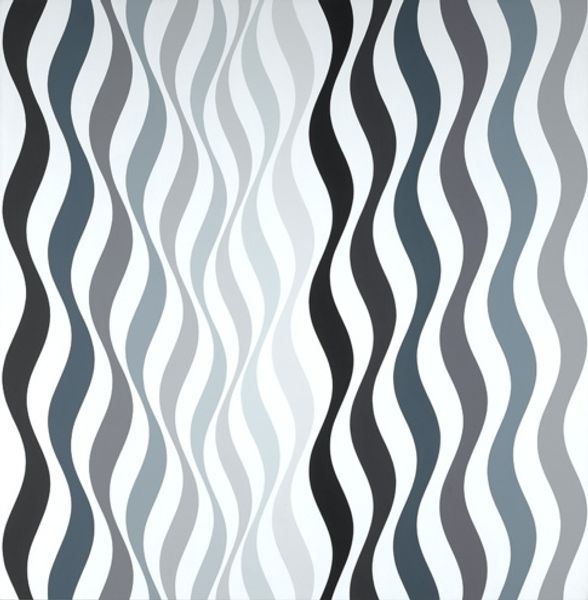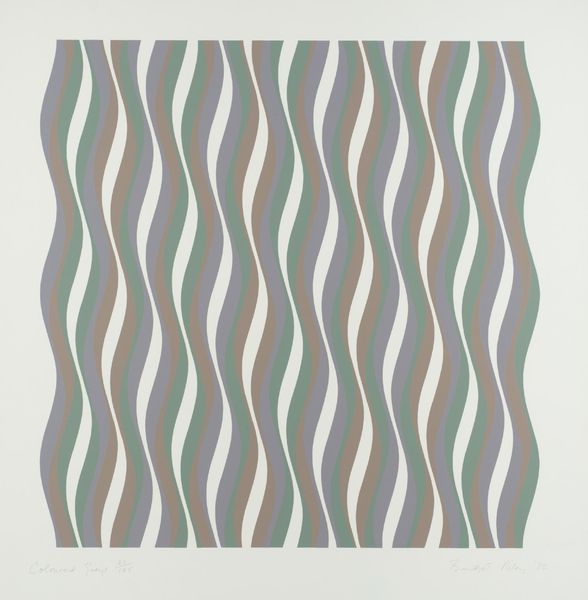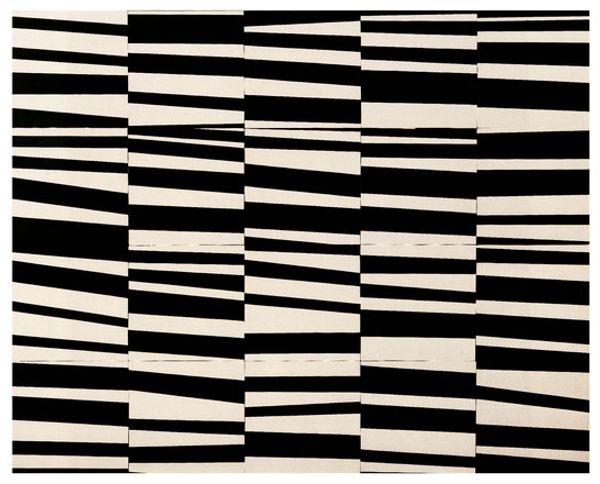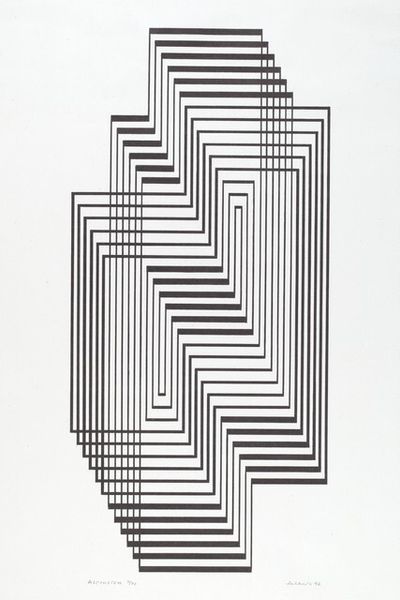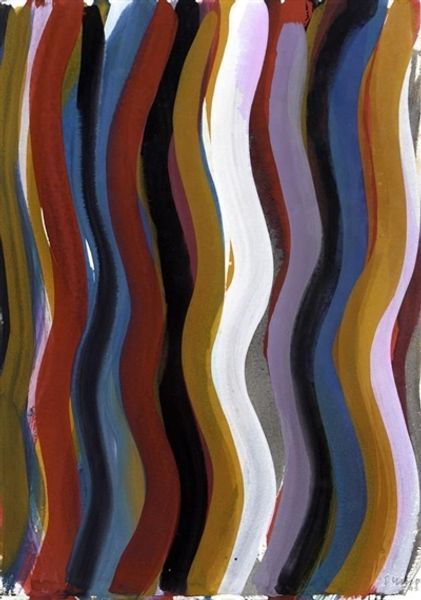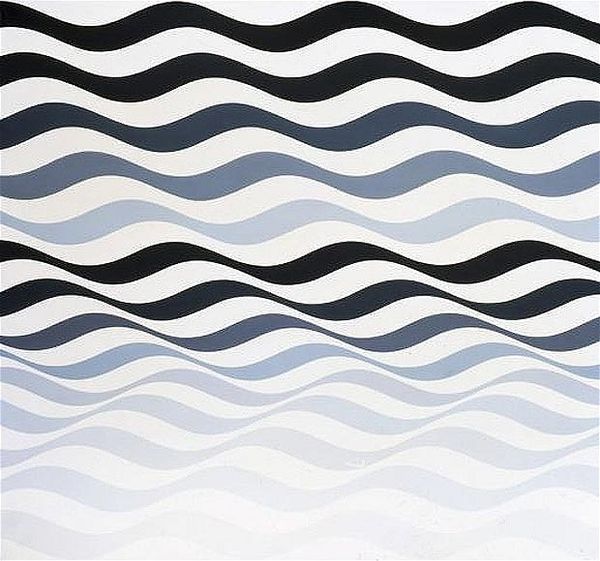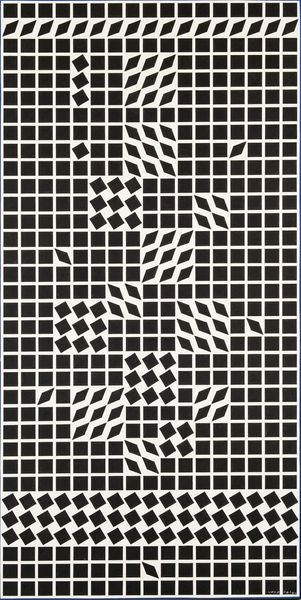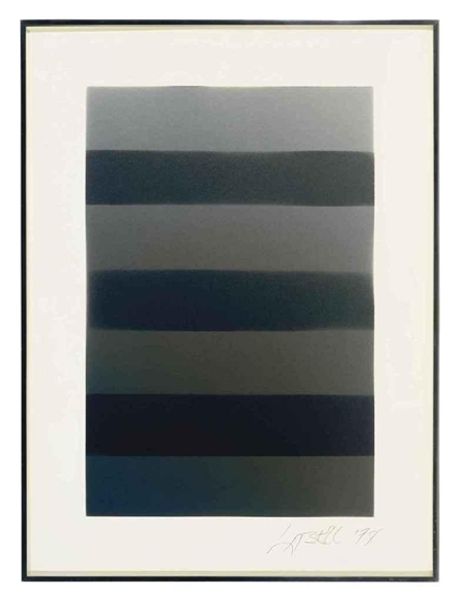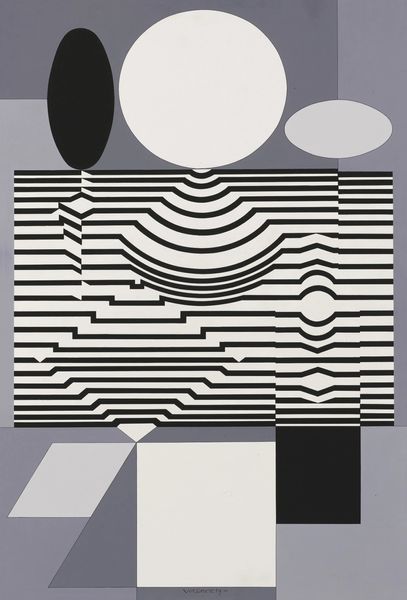
#
op-art
#
geometric pattern
#
geometric
#
geometric-abstraction
#
line
#
modernism
Copyright: Bridget Riley,Fair Use
Editor: Here we have Bridget Riley's "Arrest 1," created in 1965. The black and white undulating lines immediately give me a sense of movement, almost like waves. What do you see in this piece beyond its Op Art style? Curator: It's crucial to consider Riley's work within its historical context. Emerging in the 1960s, Op Art wasn't merely about optical illusion. How might these dizzying patterns relate to the sociopolitical unrest of the time? Editor: I hadn’t really thought about it that way. I guess with so much going on, maybe it’s about disorientation? Curator: Precisely. Think about the rise of consumer culture, the escalating Vietnam War protests, and evolving social norms. Could the painting be reflecting the public's fractured sense of reality, a sort of visual disruption mirroring societal upheaval? It is black and white—almost an analogy for starkness of racial division, if we understand the work to comment on race. Editor: I can see that. The sharp contrast really amplifies that sense of unease. Were other artists using abstraction to comment on political matters? Curator: Absolutely. Artists then—and now—utilize abstraction to critique systems of power or expose societal tensions in ways that direct representation cannot. It allows for a more ambiguous, multi-layered interpretation. How does the title, "Arrest 1", add to these multiple layers of significance? Editor: That’s fascinating! I was only thinking of it formally, but it sounds like the context gives it much more depth. I'll definitely look at abstract art differently now. Curator: Exactly! Art is rarely created in a vacuum, it’s important that it sparks conversations around identity, power, and social change.
Comments
No comments
Be the first to comment and join the conversation on the ultimate creative platform.

